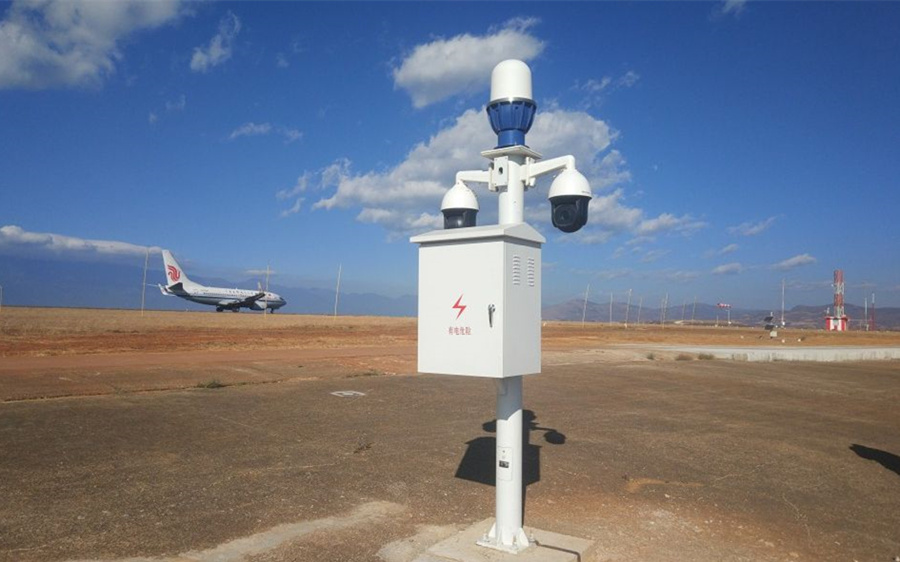Perimeter Security Radar Systems: Technologies, Applications, and Best Practices

Introduction
In an era where security threats are increasingly sophisticated, perimeter security radar systems have become indispensable for safeguarding critical infrastructure, industrial facilities, and residential areas. These systems leverage cutting-edge radar technologies to detect intrusions, monitor movements, and trigger real-time alerts. This comprehensive guide explores the latest advancements in radar-based perimeter security, their applications, and how to optimize their deployment for maximum effectiveness.
Chapter 1: Understanding Perimeter Security Radar Technologies
1.1 How Radar Systems Work in Perimeter Security
Radar (Radio Detection and Ranging) systems emit electromagnetic waves and analyze reflected signals to detect objects. Modern systems integrate Doppler radar, synthetic aperture radar (SAR), and phased array radar to achieve high accuracy in dynamic environments. For example, Doppler radar detects moving objects by analyzing frequency shifts in reflected waves, making it ideal for tracking intrusions in real time36.
1.2 Key Technologies Driving Innovation
-
Digital Beamforming: Enables precise directional control of radar beams, improving detection resolution. Systems like the AD9371 RF transceiver (used in weather radars) demonstrate how digital beamforming enhances performance in harsh conditions6.
-
Interferometric Radar: Combines signals from multiple antennas to measure minute changes in terrain or structures. This technology is pivotal for detecting subtle movements, such as fence breaches or tunneling activities9.
-
AI-Powered Analytics: Machine learning algorithms process radar data to differentiate between threats (e.g., humans, drones) and false alarms (e.g., animals, foliage)7.
Chapter 2: Applications of Radar in Perimeter Security
2.1 Critical Infrastructure Protection
Radar systems are deployed in airports, power plants, and military bases to monitor large perimeters. For instance, phased array radars can scan 360° continuously, offering unmatched coverage compared to traditional CCTV systems6.
2.2 Urban and Residential Security
In cities, radar-integrated systems like ANPR cameras (used in Belgium’s speed control networks) combine license plate recognition with motion detection to identify unauthorized vehicles near secure zones5.
2.3 Industrial and Border Surveillance
Radars equipped with dual-function capabilities (e.g., communication and detection) are increasingly used in remote border areas. These systems, such as those proposed in CSC-IM radar-communication integration, reduce costs by serving multiple purposes4.
Chapter 3: Choosing the Right Radar System
3.1 Key Performance Metrics
-
Detection Range: Ranges vary from 100 meters (for compact systems) to several kilometers (for military-grade radars).
-
False Alarm Rate: Advanced systems use adaptive noise filtering (as seen in SAR interferometry) to minimize false triggers9.
-
Environmental Resilience: Opt for radars with weather-resistant designs, such as those used in China’s Doppler weather radar network3.
3.2 Compliance and Certification
Ensure systems meet regional standards, such as China’s 《Radar Radio Management Regulations》 for frequency allocation or the EU’s 2015/413 Directive for cross-border data sharing25.
Chapter 4: Installation and Maintenance Best Practices
4.1 Site-Specific Deployment Strategies
-
Terrain Analysis: Use interferometric SAR to map elevation changes and optimize radar placement9.
-
Integration with Existing Systems: Pair radars with wireless transceivers (like those in ETC systems) for seamless data transmission8.
4.2 Mitigating Common Challenges
-
Electromagnetic Interference: Implement shielding solutions compliant with FCC Part 15 regulations.
-
Data Overload: Adopt edge computing to process data locally, reducing reliance on central servers7.
Chapter 5: Future Trends in Radar Security
5.1 Miniaturization and Cost Reduction
Emerging technologies like digital phased array chips (e.g., ADI’s AD9371) are shrinking radar sizes while boosting performance, making them accessible for small businesses6.
5.2 AI and Autonomous Response
Future systems will integrate predictive analytics (similar to Trend Micro’s Cyber Risk Index) to anticipate threats based on historical data7.
5.3 Sustainability Initiatives
Solar-powered radars and low-energy designs align with global green initiatives, as seen in Belgium’s efforts to optimize radar networks despite energy constraints5.
Conclusion
Perimeter security radar systems are evolving rapidly, driven by advancements in digital signal processing, AI, and multi-function integration. By understanding these technologies and adhering to best practices, organizations can deploy robust solutions that adapt to emerging threats. For tailored recommendations or product inquiries, contact Hongchuang Technology today.
